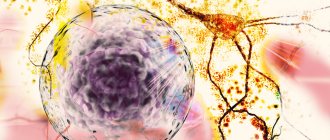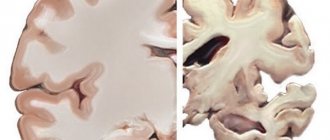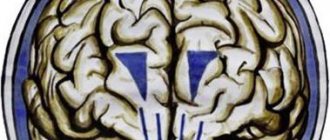Psychosomatic disorders are conditions when, under the influence of certain factors, a lot of health complaints arise, but upon instrumental examination of a particular organ, no pathological changes are detected. In this case, we are talking about psychosomatic diseases. Insomnia is a type of psychosomatic disorder.
Sleep, which should come within a quarter of an hour after going to bed, does not come for various reasons. Sleep disturbance can result in prolonged, sometimes up to several hours, falling asleep or early awakening. In this case, waking up ahead of schedule does not depend on the time of falling asleep.
In both the first and second cases, the quality of sleep necessarily suffers. As a result, the patient's general condition deteriorates. If these disorders continue to bother you for a considerable time, then, in this case, medical assistance becomes necessary. The main task of the doctor is to understand the reasons that caused psychosomatic insomnia and eliminate it.
When scientists started talking about psychosomatics
Even ancient Greek medicine spoke about the indivisibility of the human psyche and body.
Each organ was considered in relation to a specific emotion. For example, the liver is the seat of anger, the heart is the seat of fear, and the stomach is the seat of sadness and sadness. The connection, as the ancients said, is mutual: an organ disease affects a person’s emotional background. And negative emotions lead to illness of a specific organ.
In the 17th century, British physician Thomas Willis discovered that the body's sugar levels rise when experiencing grief; Thus, he discovered diabetes and gave impetus to the development of psychosomatics as a science.
Nietzsche can be considered the “spiritual father” of the development of the psychosomatic approach. He talked a lot about the “mind of the body” and created a whole philosophy. One of his statements very colorfully demonstrates the importance of the body: “You need to start from the body and use it as a guiding thread. It is a much richer phenomenon that allows for clearer observation. Faith in the body is better founded than faith in the spirit.”
And although the existence of psychosomatic connections was recognized several centuries ago, experimental psychology and medicine took up psychoanalytic research only before the Second World War.
Freud made a great contribution to the development of psychosomatics, who for the first time spoke about the extreme plasticity and vulnerability of our early childhood, the importance of early impressions that form the basic structure of the personality. Subsequently, psychoanalysts, based on the works of Freud, confirmed the fact that unconscious factors strongly influence the formation and development of painful conditions.
Today, scientists have come to the general conclusion that in 40% of cases the cause of physical illnesses is not viruses and bacteria, as previously thought, but stress, mental trauma and internal conflicts.
Arrhythmia - psychosomatic influence on heartbeat, improvement of emotional state
There is a relationship between the psychological state of the human body and the appearance of tachycardia. The signs and development of diseases that appear against the background of neurotic disorders are studied by psychosomatics. Psychosomatics of tachycardia determines the mental or psychological causes of the development of rapid heartbeat and is aimed at eliminating these causes.
Psychological causes of arrhythmia
There are several types of cardiac arrhythmia:
- Tachycardia. When this condition occurs, a pathological process of accelerated heart rate occurs. This condition is more typical for older people due to worries.
- Bradycardia. This is the reverse process of tachycardia. With this disease, the heartbeat slows down significantly. This type of psychosomatic arrhythmia most often occurs in people who are psychologically trying to slow down the pace of their lives and the aging process. They are in no hurry to live. They try in every possible way to slow down the natural aging of the body. This condition is also typical for people experiencing severe stress of losing loved ones, etc.
- Flickering. The psychosomatics of atrial fibrillation manifests itself as a disruption of the contractions of the heart. Most often, this pathology occurs in people who refuse to acknowledge obstacles in their path. Such people persistently try to reach their goal. Another category of people belonging to this category are patients who are forced to constantly obey orders.
INTERESTING fact: Psychosomatic cough in children and adults
The main symptoms of the disease include rapid heartbeat, paroxysmal pain in the heart area, sweating more than usual, and frequent urination. If such symptoms appear, you should not only consult a doctor for help, but also visit a psychologist in order to analyze your life and edit your views on life and ordinary habits.
Simple ways to treat complex diseases:
Horseradish is the only plant that can draw salt through the pores of the skin. Do it - you won't regret it! Horseradish leaves will help get rid of all the salt that has accumulated in the body and can lead to painful salt deposits...Check... Read more
Never give an antibiotic BEFORE you get a blood test with a leukemia formula. Remember, write to yourself somewhere in a visible place!!! INCREASED leukocytes, ESR, lymphocytes - VIRUS. INCREASED leukocytes, ESR, segmented and rod neutrophils... Read more
What 1 glass of this drink will do to your liver can be called a real miracle! If the liver is overloaded or does not work well, we immediately feel it. Weakness, lack of energy, dizziness, nausea, pain in the right hypochondrium, problems with food... Read more
Dandelion is the elixir of life, and what a medicine!!! The medicinal dandelion is an unpretentious plant, but contains a good half of the chemical elements of the periodic table. Sodium, potassium, manganese, magnesium, and... Read more
Seeds that repair tendons and reduce joint pain. We treat osteoporosis and osteoarthritis. Osteoarthritis of the knee is a type of degenerative joint disease or arthritis that is localized in the knee and can cause pain and di... Read more
The process of emergence and development of psychosomatic disorders
It all starts with stress, the impact of which we experience quite often in everyday life. Any stress, in turn, leads to the release of action hormones. Each person may have a different concentration of these hormones, but one way or another, stress provokes muscle tension and prepares us to respond with action.
In the wild, the reaction is immediate: the animal either attacks or flees. For a person in the modern world, immediate action is often not possible: we can neither run away from a boss shouting at us, nor fight back, for example. Thus, tension does not discharge and muscle tension remains.
Periodic stress, affecting us day after day, leads to the growth of internal discomfort. If we do not attach importance to this discomfort and do not try to work with it somehow, then it develops into painful sensations and subsequently leads to illness.
The emotions that we suppress force the body to somehow protect itself from them. And it successfully copes with this, forming a reinforced “shell” of muscles. This “corset” fetters a person, reducing his mobility and resistance to stress. Where constant chronic tension occurs in the body, functional disorders of a psychosomatic nature are formed.
Interestingly, the aforementioned “corset of tension” is formed mainly around our main “axis” - the spine. And in this sense, the spine - our inner core - reflects our balance between internal sensations and external influences. It shows how the outside world influences us and how adequately we respond to this influence.
Judging by the fact that every single person in the modern world has some kind of problem with the spine, we can conclude about the general disharmony that reigns within us. Depending on which part of the spine is bothering us, we can assume that it is we who are blocking from the outside.
Most often, if the thoracic region is bothered, that is, there are problems with the Anahata chakra, love is blocked. If the cervicothoracic region is a problem with cooperation. The neck is responsible for internal flexibility, and if it hurts, this may indicate a lack of this quality. The neck may hurt for those who refuse to face “the truth.”
If the sacrum hurts, this may indicate a refusal of mutual assistance. The person probably clings too tightly to his independence, afraid of losing his freedom of movement if someone suddenly asks him for help.
If bending is difficult, perhaps the person is resisting external forces that, in his opinion, force him to submit to conditions that are unacceptable to him. And if you have problems with bending, something inside resists freedom of movement.
The topic is very interesting and vast; it cannot all be covered in one article. We can say that the spine takes on all our problems, preventing damage to the organs. And only if he can no longer cope, the blockage penetrates deeper, taking the form of various diseases.
Scientists studying psychosomatics have noticed that people with the same diseases have similar character traits and reactions to all events.
For example, observations of cancer patients have shown that this diagnosis is often given to people who cannot express emotions, to those who forcibly restrain anger, while experiencing despair, a feeling of emptiness and loneliness.
Back pain unites those who have “victim syndrome”, who take on all their own and other people’s problems, trying to please others. Often such people neglect their own interests, which ultimately leads to internal conflict and dissatisfaction with themselves and their place in the world.
People with gastrointestinal problems are too demanding of themselves and others. They cannot come to terms with the imperfections of the world around them and themselves. It is difficult for them to “digest” failures and accept some situations that are unpleasant for them. As a result, all these emotions lead to stomach or duodenal ulcers.
All people with diseases of the cardiovascular system are united by a passionate desire to “do everything” while completely ignoring the emotional side of their lives. Thus, the emotional basis of coronary heart disease may be denial of joy, lack of love.
Problems with blood vessels are common to enslaved people. They are too delicate and shy.
High blood pressure most often occurs from excessive anxiety and suppressed anger. And so on.
The model of a person’s reaction to external stimuli, of course, is formed by his character, temperament, degree of awareness and level of spirituality. However, along with other conditions that form a predisposition to a particular disease, there is one more thing - the lifestyle that people with a particular character tend to lead.
One way or another, absolutely all people with psychosomatic illnesses tend to block their feelings. They don’t express them, don’t put them into words, don’t try to live them somehow.
Now let’s take a closer look at the destructive emotions highlighted by the psychosomatic theory.
Among them: Fear, Anger, Guilt, Resentment, Shame.
All of them trigger the “compression” mechanism in our body. Everyone remembers how the heart shrinks in fear, right? Or how does it “tear” in anger? Or how we want to “curl up in a ball” when we are sad? This is the work of psychosomatics.
We cannot avoid negative emotions. No matter how hard a person tries to suppress the anger, fear, and anxiety that arises, they still appear. It may seem strange to some, but it's good. After all, in fact, anger is a strong flow of energy that prompts a person to make an important decision. However, suppressed anger transforms into resentment, which then destroys the body.
Hidden grievances and unexpressed dissatisfaction, for example, can cause constant coughing, even chronic bronchitis. If you suppress aggression for a long time, then in conditions of sudden fear, attacks of shortness of breath occur, which are symptoms of bronchial asthma. Evolutionarily, fear is designed to support our instinct of self-preservation.
In the case of other emotions, everything is exactly the same: a person needs them, but if they are too numerous and frequent, they become dangerous. The situation is aggravated by the constant suppression of these emotions.
For greater clarity, I will give one striking example of the connection between the psyche and the body:
- A shy man went for an interview and saw a woman on the subway whom he really liked. At this moment he is embarrassed and his face turns red.
- He approaches the office - his heart is beating faster. Excitement can even cause problems with the intestines, and he runs to the toilet.
- Here he is in the manager's office. He is so worried that his heart “jumps out of his chest.”
- At the moment of conversation, the fear is so strong that breathing is interrupted, palms sweat.
- While waiting for the result, appetite disappears; a person may not eat for several days while waiting for an answer.
- After learning about a decision, even if it is positive, it is difficult for a person to relax. He may experience insomnia and headaches from overexertion.
All these reactions rarely occur simultaneously. But in general they describe the work of psychosomatics well.
1) Internal contradiction.
It happens that a person has two opposing desires at the same time: for example, to go do yoga and watch TV. He doubts for some time, but one way or another “wins” one of the desires. The example, of course, is very simplified, but in general this scheme works for us all the time:
- marry Petya or Vasya?
- Go work as a lawyer or paint?
- Meet a friend at a party or visit grandma in the hospital?
Do you understand? If we make a choice in favor of “one of”, some part unconsciously can unleash a “hidden war”, a sign of which can become psychosomatic symptoms.
A) Be aware of your true needs and feelings. For example: is watching TV our true desire or do we do it because we’re used to it? It's simpler and clearer.
B) Build your own value system, and not strive to conform to outside attitudes (get the profession that you want, not your mother, for example).
C) Be willing to let go. If you make a choice, you always gain something, but you always lose something. For example, if you decide to go to your grandmother, then let go of thoughts about your friends, and don’t spend the rest of the evening thinking about how cool you could be at the party.
D) Be responsible for the decision made, even if it is difficult to live with it. If you decide to paint, then don’t depress yourself with thoughts that lawyers earn more.
2) Unclean speech.
It can also cause psychosomatic diseases.
By using metaphors that involve organs and body parts, you run the risk of sooner or later turning them into reality.
Here is just a small list of “nasty phrases” with which we poison ourselves: “it’s sitting on my neck”, “they’re already sitting in my liver”, “he doesn’t let me breathe freely”, “this job is hemorrhoids”, “ this relationship is a complete headache”, “I can’t stand him”, “I can’t digest them”, “my heart is in the wrong place”, “tied hand and foot”, “I’m in shock”, “my back is falling off” and so on Further. Our body physically reflects the state that we express with such phrases.
Causes of psychosomatic insomnia
There can be many reasons why sleep is disturbed. But the main causes of psychosomatic insomnia are the following conditions:
- depression that develops as a result of one or another negative phenomenon in the patient’s life;
- fear - worry about the future;
- apathy developing against the background of a low emotional background;
- increased anxiety about work or loved ones;
- internal dialogue carried on endlessly among each other;
- constant tension and apprehension of danger;
- analysis of the past day and worry about the events of the next day.
All these reasons begin to manifest themselves clearly at night. Instead of resting and relieving all the problems that have accumulated during the day, night for such patients becomes a time of analysis and dialogue among themselves. If the symptoms of psychosomatic insomnia are not relieved, the patient’s general condition begins to deteriorate.
What to do
There is no specifically “psychosomatic” treatment. The psychosomatic approach involves complex work at the level of body, psyche, and mind.
When it comes to negative attitudes/beliefs, they can be “revised.” The first step here is to bring such beliefs into conscious awareness. After all, most often we don’t even know that we have them. If you take and write down all your negative attitudes and become aware of them, then the opportunity arises for a different experience, different from the previous one. This creates a more realistic, positive belief that, with regular practice, becomes habitual.
The same can be said about all destructive emotions. You can start tracking them. Try to predict their appearance and change the strategy of your behavior. If, for example, you feel that you are in the grip of anxiety about the future, try to reduce it to a minimum. The practice of contentment and acceptance will help here.
The practice of forgiveness helps eliminate sadness, guilt or shame, and regret about the past. It is very effective in promoting acceptance of past experiences and awareness of all of your lessons as necessary for development.
Fear of the unknown, including fear of death, often paralyzes us, preventing us from acting where we need to. A person is able to develop fearlessness through awareness of the path of his own life, and as he understands the Laws of Nature, his perception becomes calm and confident.
Physical activity copes well with emotional stress: working with your hands, running, going to the gym - all this helps to transfer unexpressed emotions to the physical level and get rid of them. But especially effective in this case are bodily practices that consider the body and mind as one whole - an ongoing psychophysiological process in which changes at any level affect the remaining parts.
If the body is given the opportunity to move naturally and easily, to alternate relaxation with tension, then by influencing it, it is possible to influence the psyche. Such practices include body-oriented therapy, hatha yoga practice, qigong and many other systems. Choose what resonates with you the most.
There is another good way to gain contact with yourself, to restore the harmony of mental and physical. This is meditation. When we train ourselves in a state of “neutrality”, concentrating on one thing, without getting involved in the thought process and without emotion, those same suppressed desires, or repressed negative emotions, or blocked feelings that destroy the body and soul can surface.
How to program yourself for recovery
It is necessary to realize that arrhythmia is the result of personal fears, stress and anxiety. And that fear caused by arrhythmia only aggravates the condition. That is, there is no real threat to health if an examination by a cardiologist does not reveal any diseases. This means that healing depends only on you, on inner harmony and getting rid of fears. There are hundreds of thousands of types of fear, as well as the reasons for its development. But in general we can name the following problems:
- diffidence;
- fixation on the comfort zone;
- low self-esteem;
- ignorance of one's own potential;
- psychotrauma.
To effectively get rid of fears and arrhythmia, we recommend taking a course of psychotherapy. A specialist will help you deal with past traumas, set priorities and find goals in life. Sometimes arrhythmia is associated with childhood trauma, for example, ridicule from classmates or humiliation from parents. Then you need to get rid of the “be on guard” attitude, learn to trust people, find and feel support in life.
It is important! Sometimes treatment requires medication, such as antidepressants or anti-anxiety medications. But only a psychotherapist can prescribe them. Self-medication is dangerous!
Psychosomatics: table of diseases and how to treat
Valery Sinelnikov compiled a summary of the most likely causes of diseases based on observations of many of his patients, as well as people who managed to recover or eliminate their life problems using his method remotely. They regularly write their stories and send them to the doctor. They are often the basis for the author’s new books.
On the Internet you can find a lot of interpretations on the topic “psychosomatics - table of diseases.” According to them, for example, bronchial asthma, migraines, allergies, type 2 diabetes mellitus, coronary heart disease, obesity, radiculitis, intestinal colic, pancreatitis, psoriasis, psychological infertility, vegetative-vascular dystonia, vitiligo and many other diseases are truly psychosomatic.
Yes, after reading this article, you may already understand which direction you should move in order to work through the psychosomatic causes of a specific disease. However, it never hurts to play it safe and use the services of a doctor, psychologist or psychotherapist.
Abscess (ulcer). Disturbing thoughts of resentment, neglect and revenge.
Adenoids. “Trifle” fears, fears from vanity, from the habit of worrying about everything.
Alcoholism. Feelings of uselessness, worthlessness, hopelessness, emptiness, guilt, inadequacy to the world. Self-denial, low self-esteem. “Who needs this?” Feelings of futility, guilt, inadequacy.
One of the most intractable diseases that a person can rarely cope with alone. After all, here the deep state of belonging to the world—happiness—is most often disrupted. And the formula for happiness is creativity, communication, love. If a person with alcoholism is given the opportunity to do something creatively, if he is given the feeling of being needed by others, if he loves and is loved, then healing is possible.
Allergy. Denial of one's own power. The person is intolerant of other people. Experiences a protest that cannot be expressed. Healing is possible if pockets of suppressed emotions are identified and neutralized.
Amenorrhea. Reluctance to be a woman. Self-hatred.
Angina. Inability to express yourself. A strong belief that you cannot raise your voice in defense of your views and ask for your needs to be met. Inability to express oneself. Suppressing anger because you cannot cope with a situation.
Anemia. Lack of joy. Fear of life. Believing in your own inferiority deprives you of the joy of life.
Apathy. Resistance to feelings. Suppression of emotions. Fear.
Appendicitis. Fear. Fear of life. Blocking the flow of goodness that life pours out upon us.
Appetite (loss). Fear. Self-defense. Distrust of life.
Excessive appetite. Fear. Need for protection. Condemnation of emotions.
Arthritis. The feeling of not being loved. Criticism, resentment. Not being able to say no and blaming others for exploiting you. For such people, it is important to learn to say “no” if necessary. A person is always ready to attack, but suppresses this desire within himself. There is a significant emotional influence on the muscular expression of feelings, which is extremely controlled.
Desire for punishment, self-blame. The state of a victim. A person is too strict with himself, does not allow himself to relax, does not know how to express his desires and needs. The “inner critic” is too well developed. Arthritis also occurs as a result of constant criticism of oneself and others. People with this disorder believe that they can and should criticize others.
They carry a kind of curse on themselves; they strive to be right, the best, the most perfect in everything. But such a burden, full of pride and conceit, is unbearable, so the body cannot stand it and gets sick. The solution here is to learn to forgive and let go of the situation. There is no need to try to win at any cost. Learn to be kind, add philosophical perception to your life.
Arthrosis. This is a disease of workaholics. Also, the cause of this illness can be called a person’s stubbornness, his inertia and rigidity. And the reason for this approach to life is a lack of understanding of one’s meaning in life. Such a person does not see any other meaning of his existence except to constantly do some kind of work, to look for some kind of activity for himself.
To overcome the disease of arthrosis from psychosomatics, the correct approach to the work itself and a clear understanding of why you need it are important. You can knit from morning to evening, but you won’t get arthrosis of the wrist joint. But this will be the case if a person understands the meaning of his action, if the basis of his knitting is the desire to bring joy and happiness into this world for his environment.
Asthma. Inability to breathe for one's own good. Feeling depressed. Holding back sobs. Fear of life. Not wanting to be here. Asthma occurs when there are suppressed feelings of love in the family, suppressed crying, the child experiences fear of life and does not want to live anymore. Asthmatics express more negative emotions, are more likely to be angry, offended, harbor anger and a thirst for revenge.
Also, lung problems can be caused by the inability (or unwillingness) to live independently, as well as a lack of living space. Fear of frankness, sincerity, of the need to accept the new things that every day brings.
The trigger for the development of bronchial asthma can be a negative work stoppage, in which the employee’s “oxygen is cut off,” or the arrival of relatives, because of which it is “not possible to breathe” in the apartment. Gaining trust in people is an important psychological component that promotes recovery.
Atherosclerosis. Resistance. Tension. Refusal to see the good. Frequent upset due to sharp criticism. The conviction that life is hard and unbearable, the inability to rejoice. To heal, you need to learn to rejoice, you can use positive affirmations, and tune in to the good.
Hips. Fear of moving forward in implementing major decisions. Lack of purpose.
Infertility. The subconscious secretly resists procreation, fatherhood and motherhood. Unconscious anxiety can be of the following types, for example: “The child may be born sick, it is better not to give birth at all.” Or: “During pregnancy, my husband will grow cold towards me and leave for someone else.” Or: “With a child there are only problems and no joy, it’s better to live for yourself.”
Insomnia. Fear. Distrust in the life process. Guilt. Escape from life, unwillingness to acknowledge its shadow sides. Preoccupation with struggle, problems. The inability to separate yourself from the hustle and bustle or from your experiences and emotional states. Unexpressed, suppressed and “unreacted” feelings and emotions.
Warts. A petty expression of hatred. Belief in your ugliness.
Bronchitis. Nervous atmosphere in the family. Arguments and screams. A rare calm. One or more family members are driven into despair by their actions. Unspoken anger and claims that cannot be made.
Bulimia. Fear and hopelessness. Feverish overflow and release of feelings of self-hatred.
Bursitis. Symbolizes anger. The desire to hit someone.
Phlebeurysm. Staying in a situation you hate. Disapproval. Feeling overloaded and overwhelmed by work. Exaggerating the severity of problems. Inability to relax due to feelings of guilt when receiving pleasure. Fear and anxiety about the future. Constant anxiety in general. Suppressing anger and discontent within oneself with the help of will. A ban on fully experiencing your irritation. Judging irritability in other people.
Vegetative dystonia. Infantility, low self-esteem, tendency to doubt and self-blame.
Inflammatory processes. Fear. Fury. Inflamed consciousness. The conditions you see in life cause anger and frustration.
Sinusitis. Suppressed self-pity. A prolonged situation of “everyone is against me” and an inability to cope with it. Children's tears. Feeling like a victim. This is an internal cry, through which the subconscious wants to bring out suppressed emotions - bitterness, disappointment about unfulfilled dreams. The accumulation of mucus increases after strong emotional shocks.
Allergic chronic runny nose indicates a lack of emotional control. A person with chronic sinusitis tends to accumulate negative emotions in himself. His memory is organized in such a way that he does not forget anything from negative experiences. Unsolved problems greatly overload the psyche. The nose is associated with the volitional functions of a person. When they are overloaded, energy accumulations form in the nose, they form a disease.
Gastritis. Prolonged uncertainty. Feeling of doom. Suppressed frustration and irritation that everything is not happening as it should, and instead of love and recognition, we receive neglect and hostility from the world. A strong outburst of anger in the near past.
Haemorrhoids. Fear of not meeting the allotted time. A person who constantly forces himself to do a job that he does not like, pushes himself to the limit of his capabilities, or holds back accumulated negative emotions regarding past events is constantly in a state of tension. At the same time, he does not give an outlet to this tension, experiencing all the complex processes inside, alone with himself.
Anger is in the past. Burdened feelings. Inability to get rid of accumulated problems, grievances and emotions. The joy of life is drowned in anger and sadness. Fear of separation. Fear of material disadvantage. Emotional stress is most often created by the desire to urgently get what is missing. And it grows out of a feeling of material disadvantage or inability to make decisions.
Treatment of psychosomatic insomnia
The presence of psychosomatic insomnia in patients requires an integrated approach to treatment. First of all, this is psychotherapy. The main task of the doctor is to find out the cause that affected the sleep disorder. If the patient has realized the cause of his insomnia, then psychotherapeutic treatment is possible without the use of medications. In this case, sleep restoration occurs much faster.
If the patient does not understand the cause of the sleep disturbance, then the psychotherapist finds out why the failure occurred and under what circumstances. The method of psychotherapy that the doctor will use depends on the patient’s condition, his mood for treatment, and understanding of his problem.
Drug treatment is prescribed according to the indications and recommendation of the doctor. What kind of drugs these will be, in what dosage and in what course, is determined in each individual case by the psychotherapist. These may be traditional medicine, or they may be tranquilizers that have a hypnotic effect.
The result in the treatment of psychosomatic insomnia will be successful if the patient applies as early as possible for sleep disorders, regularly visits a psychotherapist and follows all the doctor’s recommendations.
Author of the article: neurologist Tatyana Vladimirovna Ivanova
about the author
Valery Sinelnikov approached issues of human health from the position of a doctor. He is a physician, certified psychotherapist and homeopath. Receiving people and listening to complaints about their well-being, he suddenly realized that every disease has deep causes in the psyche and subconscious of the patient, and by eliminating these causes, it is possible to help heal the person in the most effective way.
As a result, life itself decreed that Sinelnikov also become a writer, as well as the officially recognized founding father of a number of important discoveries in the field of medical psychology. He is the founder of the charitable foundation “Dr. Sinelnikov’s School of Health and Joy.” Sinelnikov's works quickly became popular and were translated into several languages.
Valery was born in Vladivostok in 1966. His father was an officer in the missile forces, and his mother was a school teacher. He graduated from the Simferopol School of Physics and Mathematics with a gold medal, and graduated from the Medical Institute in Crimea with honors. He practiced as a therapist, then received a second education in psychotherapy, and was keenly interested in the principles of homeopathy.
His very first book had a bomb effect - “Love Your Illness” was published in 1999 and immediately became very popular. In it, Sinelnikov collected and visually analyzed his own practice: he outlined the basics of his method with references to very real stories of his own patients. That is why the book quickly fell in love with readers, who noted that Sinelnikov presents his thoughts specifically, clearly and confirms them from a medical point of view, which distinguishes him from many writing psychologists who limit themselves to general metaphysical statements.
Classification of diseases according to Dr. Sinelnikov
Dr. Sinelnikov divided all diseases into groups:
- head ailments;
- diseases of the nervous system;
- mental disorders;
- ear pathologies;
- eye diseases;
- diseases of the blood, cardiovascular system;
- lymph abnormalities;
- lung diseases;
- throat pathologies;
- nose diseases;
- digestive organs (mouth, tongue, stomach);
- liver diseases;
- pancreatic diseases;
- intestinal diseases;
- anus, rectum;
- kidney diseases;
- women's diseases;
- problems during pregnancy;
- problems with the mammary glands;
- men's diseases;
- venereal diseases;
- body (meaning of sides, causes of obesity);
- joints;
- neck;
- back;
- legs;
- skin diseases;
- nails;
- hair;
- inflammation and infectious diseases;
- injuries, accidents;
- thyroid diseases;
- oncology, tumors;
- bad habits (alcoholism, smoking);
- childhood diseases.
In addition to explaining the causes of diseases, the doctor describes the metaphysical significance of each system and organ. He outlined all this in the author’s table of diseases.
Key Ideas and Principles
Valery Sinelnikov is sure that everything, according to the laws of physics, is in dynamic equilibrium. If a person finds this balance with the world around him, he recovers, and his quality of life improves significantly. The Universe gives the one who is in balance with it everything he needs: health, money, fulfillment of desires, etc. Sinelnikov considers it an intelligent organism, a large energy information repository, which contains data about everyone in the past, present and future.
The doctor calls for maintaining balance with nature and its laws at all levels, and especially at the psychological and psychic level. At the same time, Valery Sinelnikov considers Consciousness to be the most important thing in the Universe. It is not the person himself who is in constant connection with nature, but his subconscious - the least studied part of the human consciousness, which has always been of keen interest to psychotherapists and psychiatrists. Only the subconscious knows complete and accurate information about the state of things, while at the conscious level a person most often distorts this information, since he evaluates it from the point of view of morality accepted in society, his own experience, views, etc.
It turns out that illness is the only way by which the subconscious, always harmonious with the Universe, can reach a person’s consciousness and inform him of the need to urgently change something.
Arguing that most people in everyday life are either victims (everyone offends them, they are treated unfairly) or tyrants (aggressive and controlling, accustomed to going straight to the goal), Sinelnikov developed his own new model of consciousness and attitude to the world - the “Wizard” model. or "Master". He, in essence, proposes to abandon old attitudes and change his worldview from the position that a person creates his own life, he is the rightful owner of it, he is a real wizard who can achieve everything he wants if his thoughts are pure.
For people who are looking for the reasons for their failures, their own illnesses and the frequent illnesses of their children, Sinelnikov offered not only a table of possible psychosomatic causes, but also a method of communicating with their own subconscious, which knows exactly why the disease appeared. At the same time, he teaches a simplified system of self-immersion and subconscious programming.
Having asked his subconscious what caused the problem and received an answer, he suggests changing his own views in accordance with the answer and forming new attitudes that will launch the healing mechanism. This is how a person can not only improve his health, but also fulfill his deepest desires, since another principle of Sinelnikov states that the Universe is abundant and generous and gives everyone who strives for balance with it everything they need.
If we briefly outline the main theses of Dr. Sinelnikov, they sound like this.
- Any problem or illness is the fruit of our own thoughts. Everything is born in the head: the more negative the thoughts, the worse things go for a person, the more and more often he gets sick.
- A person must control not only his thoughts, monitor the purity of his thoughts, but also his words, which also carry a strong energy charge.
- Optimism and positive thinking should be normal and natural. They are the unique tool for achieving goals.
- All people are unique, everyone is unique, you need to realize and respect this, be flexible and patient in communication; in each of them we see a part of ourselves and the Universe and remember that not only illnesses speak about something, but also all the people we meet with good intentions, according to the plan of the Universe, carry certain important information for us.
Symbolism of the body according to Sinelnikov V.V.
Diseases are the cry of the subconscious. And only it knows how to live in harmony with the Universe, only it knows what is right and what is wrong in life. If mistakes in a person’s life reach a critical level, then the subconscious attracts attention through somatization of the conflict. What refers to errors (psychosomatics, Sinelnikov):
- aggressive and destructive thoughts;
- negative thinking;
- wrong actions;
- erroneous settings;
- negative feelings.
With the help of somatization, the subconscious mind points out human mistakes. This is how the subconscious says that it’s time to change something in life.
Communication with the subconscious - how?
Only the subconscious, according to Sinelnikov’s method, is able to tell a person in more detail exactly what events, grievances or meetings with people, what actions gave rise to trouble or illness. To do this, the doctor gives tips on establishing contact with your own subconscious. These tips contain a lot of theoretical psychotherapy, the simpler and clearer everything turns out in practice.
To begin with, Valery Sinelnikov advises taking a relaxed body position, not straining, and feeling lightness throughout the body. Then mentally ask a question, ask what his words, actions or thoughts, what situations caused the problem that exists. The answer can come in the form of an image or sounds, in the form of a ready-made answer, a phrase. The answers can be “Yes” and “No” if a person uses the finger method: agree in advance with the subconscious which finger of which relaxed hand will tremble or rise if the answer is positive or negative.
What is a disease and where does it come from?
To understand the triggering mechanism of any illness, you must first understand the structure of life. Every living being obeys the main life law of dynamic balance. Since birth, living beings unconsciously strive for balance. Living organisms are constantly influenced by external influences, certain events occur, and a variety of stimuli arise. And to all this there is a certain response.
A healthy body can be considered a body in which harmony and balance are maintained. A harmonious state for a modern person with such a frantic pace of life sometimes seems unattainable. It seems that you have just managed to achieve balance inside, when something comes along that will throw you out of balance. At such moments, a person is required to immediately realize what and where went wrong in order to restore harmony in a timely manner.
Moreover, the body itself always strives to restore harmony. This leads to such a simple definition of an illness - it is a signal of an imbalance in the system. First, a person begins to feel that something is happening in a certain organ or organ system that is not as usual. Then the person feels pain. With its help, a person is even more forced to think about the presence of a failure.
If a person does not listen to pain, but begins to drown it out with medications, then the subconscious will only intensify it. Pain is a signal; when it appears, a person already knows for sure about a malfunction and dysfunction in some organ. If you realize and accept this mechanism as a concern of the subconscious, then there will be no such disdain for the disease and the desire to get rid of it at any cost. Pathology needs to be recognized, understood, and only then can healing begin.









